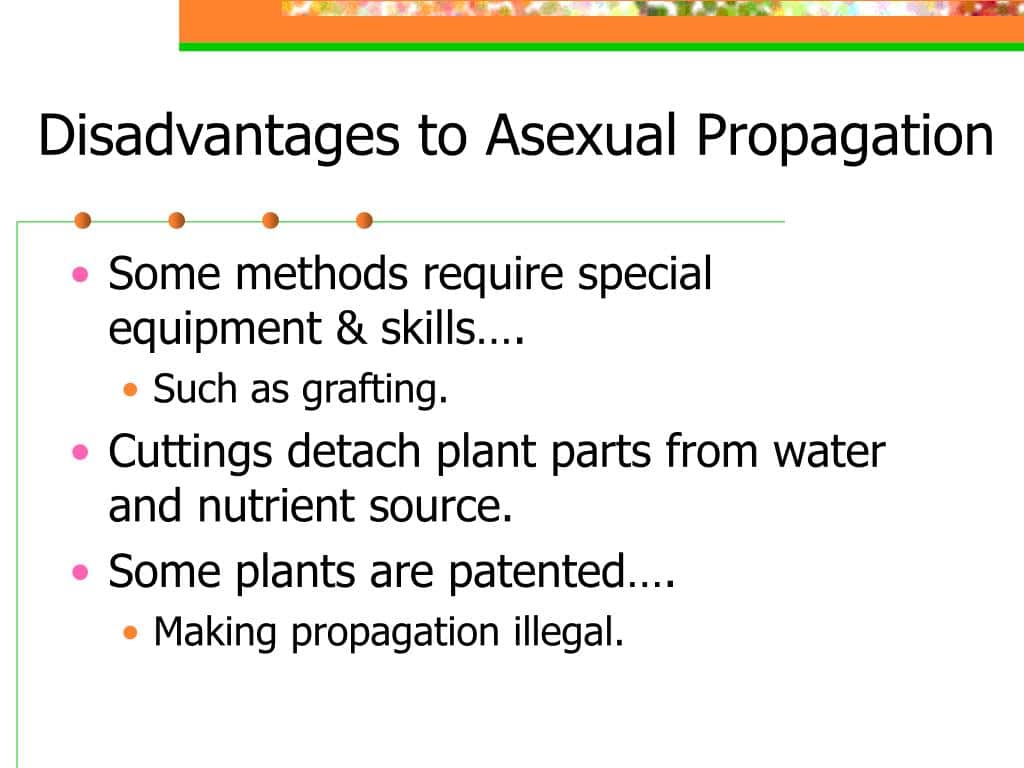Vegetative Propagation or Asexual reproduction
Most non-flowering plants reproduce asexually without any transfer of the male gamete to the female gamete.
Plant reproduce asexually by childing, offshoot, tuber, lowering, and stelons.
Asexual reproduction can also be referred to as vegetative propagation, monotony, or agamogeny.
In asexual reproduction, there’s no pollination or fertilization, hence, there’s no need for male and female parts to be present for reproduction.
While there are advantages of vegetative propagation, there are also disadvantages of asexual plant reproduction.
What are the Disadvantages of Asexual Reproduction?
According to some scholars, asexual reproduction or vegetative propagation is a bad thing in agriculture.
While it may not be ‘completely true’, here are the disadvantages or bad effects of asexual reproduction in plants.
- In asexual plant reproduction, the parent plants reproduce by cell division.
Therefore, the new offspring, being exactly similar to the parent plants would carry even undesired qualities and certain diseases of the parents.
However, the genome of the offspring can be altered as a result of spontaneous mutation.
- The second disadvantage of asexual reproduction in plants is that mass production is not possible since they’re not produced from pollen grains which can be in thousands.
- Since there are no variations in the offsprings produced through the asexual means, the offspring may not be able to withstand changing environmental conditions, therefore, less efficient.
- Since the child plants are almost the same in vegetative propagation, they react to the environment almost the same way.
- In the asexual reproduction of a plant, the parent plant can not produce better offspring since there cannot be an exchange of genetic properties with the better parent plant.
- Plants produced by asexual means usually develop much faster than those from seeds, and this could bring about the over-crowding of the young plants.
- Young plants produced from asexual reproduction are independent of the parent plant, therefore the plants would have to source for space, nutrients, and water on its own, and under poor conditions, the survival rate may be low especially during the hot seasons.
- Cuttings, one of the means of asexual propagation, detach the young plants from the parent plants, thereby cutting the supply of nutrients and water from the parent plants.
- Overcrowding of young plants, especially under limited resources, can lead to high competition for space and nutrients, and the survival of the fittest.
- Another disadvantage of asexual reproduction is that it gradually reduces the strength and vigor of the succeeding generations.
- In plant asexual reproduction, the offspring can be susceptible to diseases since there are no variations, and when there’s an outbreak of a disease, it’s likely to affect most of the child plants.
- Some plants are patented, therefore, if it’s asexually produced only, making propagation is illegal and may not be possible.
- In the asexual reproduction of plants, some methods and techniques of propagation may require special skills and tools.
Conclusion
Vegetative propagation or asexual reproduction of plants does not give room for the improvement of plant species, mass production, and yield for farmers.








